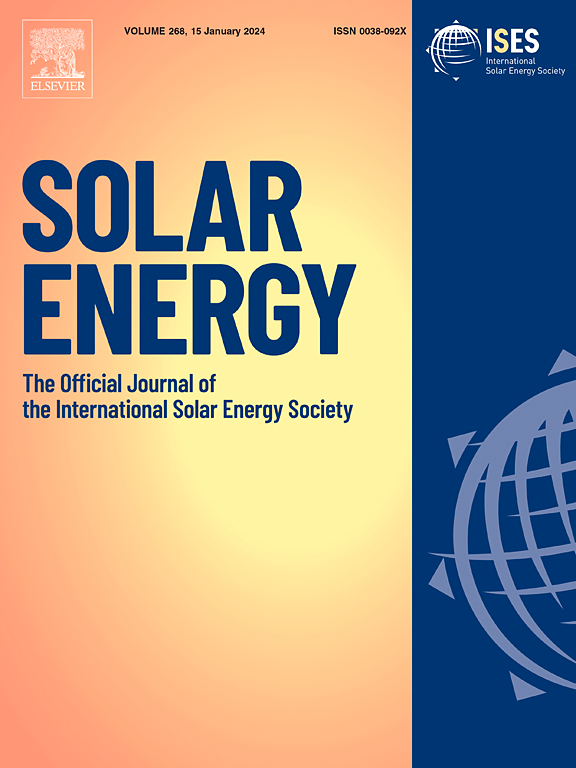Experimental study on the performance of the photovoltaic thermal (PVT) connected in series with flat plate solar collector (ST)
IF 6
2区 工程技术
Q2 ENERGY & FUELS
引用次数: 0
Abstract
Integrating a photovoltaic thermal system (PVT) with a solar thermal system (ST) allows for the simultaneous achievement of two outcomes: an increase in thermal and electrical efficiency. This work is an experimental study that combines PVT and ST systems together (PVTST) to show how well they work in various weather conditions on four different days in January, February, March, and April. The results showed that the PVTST system raised the output hot water temperature more than the ST system alone. The four testing days recorded temperature differences of approximately (6.15, 6.65, 7.51, and 5.48) °C, respectively. The thermal efficiency of the PVTST system improved by an average of 24.8%, 18.2%, 22.3%, and 19.4%, as compared to the ST system on the four test days, respectively. Similarly, the exergy efficiency showed an average improvement of 7.98%, 7.45%, 7.82%, and 6.97%. The implementation of a PVT system resulted in an average improvement in electrical efficiency of 31.04%, 41.16%, 47.34%, and 11.55% compared to the traditional PV panel during the four selected days, respectively. According to the single room heating simulation results, both the PVTST and ST systems can efficiently heat a single room during the testing days of February, March, and April. However, in January, the ST system had a deficit of approximately 15.9%, whereas the PVTST system had a deficit of around 8.18%. The results indicate that the current PVTST system can meet approximately 61.4%, 79.4%, 77.3%, and 75% of the required hot water temperature on the tested days, respectively.
与平板太阳能集热器(ST)串联的光伏热(PVT)性能实验研究
将光伏热系统 (PVT) 与太阳能热系统 (ST) 相结合,可以同时实现两个结果:提高热效率和电效率。这项工作是一项将光伏热系统和太阳能热系统结合在一起(PVTST)的实验研究,目的是在一月、二月、三月和四月的四个不同的日子里,展示它们在各种天气条件下的工作效果。结果表明,PVTST 系统比 ST 系统更能提高输出热水的温度。四个测试日的温差分别约为(6.15、6.65、7.51 和 5.48)°C。与 ST 系统相比,PVTST 系统在四个测试日的热效率平均分别提高了 24.8%、18.2%、22.3% 和 19.4%。同样,放能效率平均提高了 7.98%、7.45%、7.82% 和 6.97%。与传统光伏板相比,光伏热发电系统在四个选定测试日的平均电效率分别提高了 31.04%、41.16%、47.34% 和 11.55%。根据单间供暖模拟结果,在二月、三月和四月的测试日,PVTST 和 ST 系统都能有效地为单间供暖。然而,在 1 月份,ST 系统的供热量不足率约为 15.9%,而 PVTST 系统的供热量不足率约为 8.18%。结果表明,目前的 PVTST 系统在测试日可分别满足约 61.4%、79.4%、77.3% 和 75% 的热水温度要求。
本文章由计算机程序翻译,如有差异,请以英文原文为准。
求助全文
约1分钟内获得全文
求助全文
来源期刊

Solar Energy
工程技术-能源与燃料
CiteScore
13.90
自引率
9.00%
发文量
0
审稿时长
47 days
期刊介绍:
Solar Energy welcomes manuscripts presenting information not previously published in journals on any aspect of solar energy research, development, application, measurement or policy. The term "solar energy" in this context includes the indirect uses such as wind energy and biomass
 求助内容:
求助内容: 应助结果提醒方式:
应助结果提醒方式:


